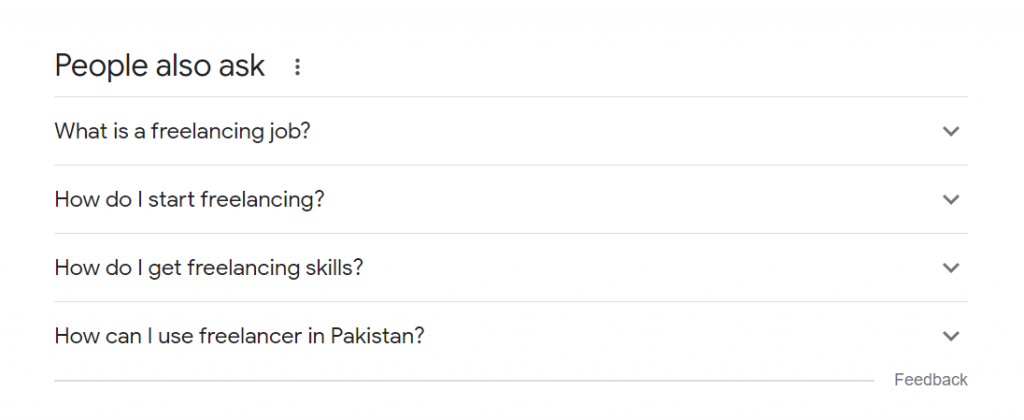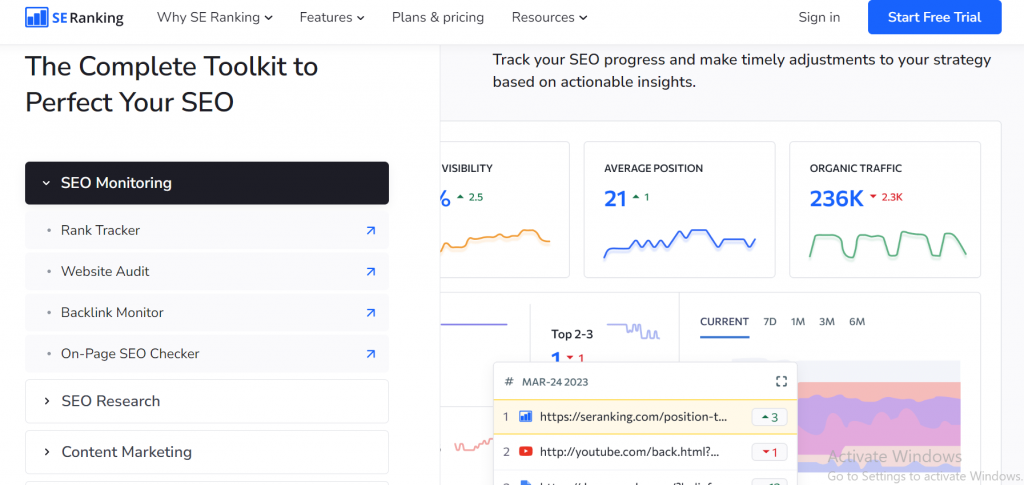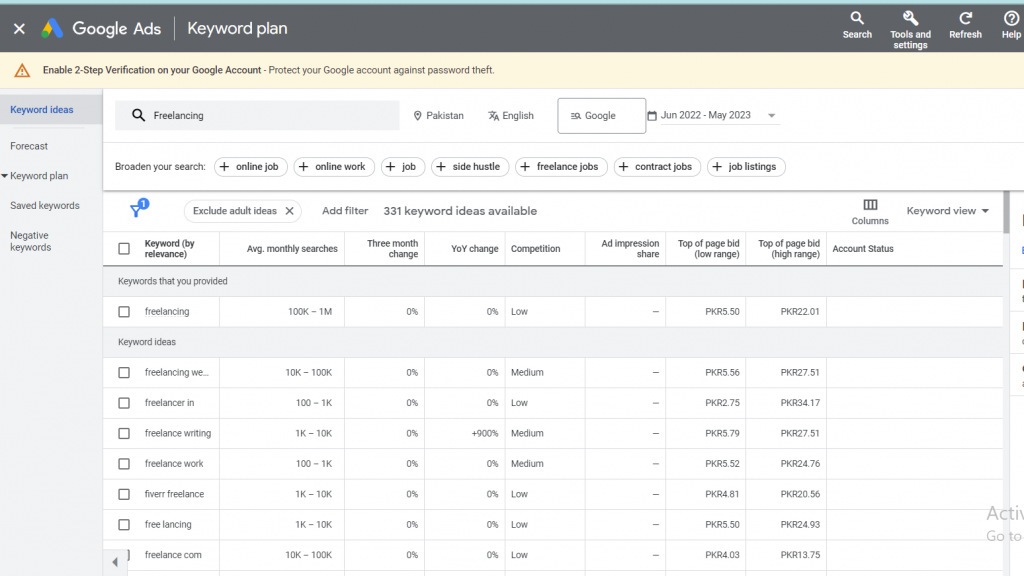Now more than ever, having an online presence is very essential.
Online visibility has a significant impact on a company’s success, whether it is a tiny firm or a massive global corporation.
For anyone looking to expand their business online, having a search engine optimization (SEO) strategy is essential.
What Is SEO, And Why Is It Important?
Search engine optimization, or SEO, is the best strategy to increase the number of people who see your website, content, and brand.
You improve your chances of appearing higher in the search results by optimizing your content for search engines.
The reason why organic search is so successful is because the individuals who find your material are actively looking for it. Better quality leads typically result in higher levels of interaction and conversions. In terms of increasing your visibility, SEO is a great long-term investment.
In contrast to paid advertising, where your reach often plummets the moment you stop paying, a piece of content that has been optimized for search engines might continue to receive traffic months or even years after it was first published.
Although it requires more work upfront and could take some time to see benefits, it is absolutely worth the wait.
What does Organic Traffic mean?
Visitors who arrive at a website via unpaid or natural search engine results are referred to as organic traffic. These visitors find the website by typing in relevant keywords or phrases into a search engine like Google, and the search engine displays the website’s link in the search results.
It is different from paid traffic, which involves advertising campaigns where website owners pay to have their links displayed prominently in search results or on other websites. It is considered highly valuable because it indicates that the website is ranking well in search engines and attracting visitors who are genuinely interested in its content.
We will walk you through five techniques in this article to assist you in boosting organic website traffic.
Target People Also Ask (PAA) Sections:
You may already be familiar with Google search results “People Also Ask” (PAA) sections. These answer boxes are at the bottom of the first search and display questions related to the first question. Each question has a short answer from the website and a link to the resulting page. Optimizing your content to appear in the PAA section can increase organic traffic to your blog or website.
 The Importance of ‘People Also Ask’ Sections:
The Importance of ‘People Also Ask’ Sections:
PAA sections are found in approximately 43% of all examinations. However, the degree of user engagement varies in these Q&A sections. In some cases, only a minority of users interact with the PAA department; in other studies, this number can reach 13%. About 40% of those interactions are clicks.
If your content already ranks among the top results for a specific search query, the benefits of appearing in the PAA section may be minimal. Nevertheless, if your content currently needs to rank highly for a particular search query, being featured in the PAA section can help you drive organic traffic you wouldn’t have otherwise obtained.
Utilizing Related Searches:
If you want to increase your chances of appearing in the PAA section, it’s essential to optimize your content by providing concise answers to questions that users are seeking. The “Related searches” section at the bottom of the Google search results pages is an excellent source for identifying these questions. This section offers insights into what users are searching for, giving you valuable information to craft your content accordingly.
In addition to related searches, you can also utilize keyword research tools such as AnswerThePublic. This platform allows you to explore related questions for any query, providing a comprehensive list of potential questions to target in your content.
Optimizing Your Content:
It’s basic to organize your content accurately to make it more available to search engines whenever you’ve decided on the questions you need to target. This incorporates involving subheadings for the questions and giving compact and relevant answers beneath every subheading. A profoundly viable technique is integrating a committed “Frequently Asked Questions ” (FAQ) segment on your pages.
By organizing your content with subheadings for each question and answering them concisely, you work on your possibilities being highlighted in the PAA area. Also, search engines can quickly distinguish and remove significant data, improving the probability that your content will be noticeably shown in the search results.
Thus. Targeting the “People Also Ask” section in Google search results is valuable for increasing organic traffic to your blog or website.
Analyze your keyword gaps:
Understanding and closing the keyword gap between your website and competitors can significantly enhance your online presence.
What is a Keyword Gap?
A keyword gap refers to the keywords that your competitors are targeting, but you are not. By identifying and addressing these gaps, you can attract organic traffic to your website, gain a competitive edge, and discover new content ideas that align with user search intent.
Why Analyzing Keyword Gaps Matters?
Closing the keyword gap is essential to capitalize on unexplored opportunities and meet the demands of customers looking for particular topics connected to your niche. You can gain insightful information about the keywords your competitors successfully target by eliminating branded terms from the analysis. This will give you a roadmap for extending your content strategy and gaining a larger piece of the market.
Benefits of Analyzing Keyword Gaps:
- Increased Traffic: You may target those keywords in your content and draw in users looking for comparable information by figuring out the keywords your competitors are ranking for. As a result, your website’s organic traffic may increase significantly.
- Enhanced Competitiveness: By finding areas where your competitors are performing well but you are not, keyword gap analysis gives you a competitive edge. By bridging these gaps, you can level the playing field and establish yourself as a competitive option for users looking inside your specialization.
- Content Ideation: Investigating keyword gaps might provide you with innovative content ideas that you may have missed. By learning the themes your competitors are addressing, you can fill in any gaps in your content strategy and produce valuable, pertinent, and exciting material that appeals to your target audience.
How to Analyze Keyword Gaps?
You will need access to a trustworthy keyword research tool like Ahrefs or SE Ranking to analyze keyword gaps efficiently. Even though these tools can be pricey, if you’re on a tight budget, you can take advantage of free trials, especially with SE Ranking. Here’s how you can get started:
- Identify Competitors: Start by identifying your major niche competitors. These websites or companies have comparable keyword and audience targeting strategies to yours.
- Conduct Keyword Research: Use the keyword research tool of your choice to examine the keywords your rivals are ranking for but not on your list of target keywords. This approach will highlight the holes you must fill.
- Evaluate Search Volume and Difficulty: Analyse the keyword difficulty and search volume for the chosen keywords. This will assist you in ranking the gaps you should focus on according to their likelihood of success and potential impact.
- Develop Content Strategy: Once you have identified the keyword gaps, it’s time to develop a content strategy to address them. Create high-quality, advanced content that targets these keywords while offering some benefit to your audience. This will assist you with drawing in the right traffic and working on your possibilities to rank higher in search engine results.
- Monitor and Refine: Persistently monitor your keyword rankings and the performance of the substance you’ve made. Adjust as needed to ensure you effectively close the keyword gap and achieve your desired results.
So examining keyword gaps is an essential way to deal with increasing your site’s visibility, drawing in more organic traffic, and beating your rivals.
Refresh outdated content:
Refreshing outdated content is a fundamental task that numerous bloggers frequently neglect. Over the long haul and as you distribute more blog posts, a portion of your content can become out of date. It is crucial to address this issue to maintain the relevance and accuracy of your blog.
A step-by-step guide to help you effectively update your posts:
- Recognizing Outdated Content: While reviewing your content library, it is fundamental to distinguish posts that may be obsolete. Focus on articles that reference explicit years, product audits and correlations, bullet point articles, and comparative kinds of content.
These are the pieces most prone to becoming obsolete over time. You may prioritize your efforts and ensure that your most useful material is always current by compiling a thorough list of such items.
- Prioritize High-Traffic Posts: Prioritize those that receive the most traffic among the identified outdated posts. These posts are like golden eggs, attracting many visitors to your blog. Maintaining a loyal audience is crucial to keep these posts informative and relevant.
By refreshing high-traffic posts, you increase the likelihood of retaining your readership and attracting new visitors.
- Please Review and Update: Now is the right time to look at and update each post after you’ve made a rundown of the ones that should be refreshed. Follow these steps to guarantee your substance stays precise and engaging:
- Evaluate Accuracy: Begin by reviewing the data introduced in each post. Check if any data, insights, or references are obsolete or invalid. Replace outdated data with the latest and exact information that anyone could hope to find. Check any external links, guaranteeing they are active and guiding readers to applicable sources.
- Enhance Relevance: Evaluate the general importance of the post’s content. Consider if any new turns of events, trends, or bits of knowledge have arisen since the first publication. Consolidate relevant updates to guarantee your content satisfies current industry guidelines and assumptions. Add new examples, case studies, or expert opinions to improve the post’s worth and furnish readers with cutting-edge data.
- Improve Readability: While refreshing the material, be aware of the post’s readability. To make the content more intriguing and easy to understand, work on its design and flow. Long passages ought to be separated, the text should be coordinated with headings and subheadings, and for clearness, there ought to be bullet points or numbered lists. By further developing readability, the updated content will be more interesting to both new and repeat readers.
- Optimize SEO: Take the opportunity to optimize the post for search engines. Update keywords and meta tags to align with current search trends and improve the post’s visibility. Conduct keyword research to identify relevant terms and phrases that can help drive organic traffic to your refreshed content. By optimizing the post’s SEO elements, you can attract more visitors and increase its overall reach.
Refreshing outdated content is a vital aspect of maintaining a successful blog. By identifying and updating posts that have become obsolete, you ensure that your content remains accurate, relevant, and valuable to your audience.
Look for low-competition, quick-win keywords:
Many individuals focus on high-volume or reasonably competitive keywords while directing keyword research. These keywords get critical traffic and can be moderately easier to rank for with all-structured organized content. However, one often overlooked strategy is focusing on low-competition keywords with modest search volumes.
- Understanding Low-Competition Keywords: Low-competition keywords refer to looking through terms with moderately low search volumes, typically ranging from 100 to 200 month-to-month searches. Advertisers and bloggers frequently need to focus harder on these keywords because of their restricted potential for immediate high traffic. Nonetheless, they present an interesting and open door to accomplish quick wins and increase organic traffic to your site.
However, they present a unique opportunity to achieve quick wins and increase organic traffic to your website.
- Utilizing Google Keyword Planner: To find low-competition keywords, use tools like Google Keyword Planner. This tool permits you to arrange terms from lowest to highest search volume as well as the other way around and offers insightful data about keyword search volumes.
Utilizing Google Keyword Planner will help you find hidden opportunities that your rivals may have missed.
The Advantages of Low-Competition Keywords:
- Easier Ranking: Ranking for low-competition keywords in search engine results is relatively easier because they have less competition. By producing well-structured, well-researched content, you may increase your chances of ranking highly for these keywords and generating targeted traffic to your website.
- Targeted Audience: Low-competition keywords often attract a highly targeted audience. Increased conversion rates and increased user satisfaction are the results of users who search for certain niche keywords since they are clearly interested in what you have to say and are more inclined to interact with it.
- Quick Traffic Boost: Incorporating low-competition keywords into your content strategy can boost immediate traffic, especially for new websites. While the search volume may be lower, the cumulative effect of ranking for multiple low-competition keywords can lead to a significant increase in overall organic traffic.
Strategies for Maximizing Low-Competition Keywords:
- Grouping Keywords: Identify related low-competition keywords that can be grouped. This allows you to create comprehensive content targeting multiple keywords within a single post. By addressing a range of closely related queries, you enhance your chances of ranking for various search terms and expanding your reach.
- Long-Tail Keywords: Focus on long-tail keywords, which are longer and more unambiguous expressions. Long-tail keywords frequently have lower competition and higher conversion rates. By integrating these keywords normally into your content, you can draw highly targeted traffic and take care of the particular requirements of your audience.
- Content Quality: When aiming for low-competition keywords to create high-quality, instructive content is fundamental. Lead broad examination, offer insightful analysis, and address the keyword’s search purpose. Your possibilities of ranking well and laying out trust in your niche are expanded by creating thorough and definitive content.
Update the tags for your post titles and descriptions:
Observing the performance of your blog posts is vital for upgrading their success. One critical angle to consider is your posts’ click-through rate (CTR) on search engine results pages (SERPs). The top outcomes in SERPs get most of the clicks, making it fundamental to go for high rankings.
Here, I will discuss the significance of refreshing post titles and meta description tags to further develop rankings, increase CTR, and drive organic traffic to your site.
- Understanding the Significance of Titles and Meta Descriptions: Titles and meta descriptions assume a vital part in SEO and the outcome of your posts. They directly influence the visibility and allure of your content in search engine results.
Compelling blog titles are more likely to grab users’ attention, increasing the likelihood of clicks and engagement. Meta descriptions provide a concise summary of your content, giving users a glimpse of what to expect when they click on your post.
- Tweaking Titles and Meta Descriptions: Updating titles and meta descriptions is relatively simple, especially when using content management systems like WordPress.
Follow these steps to optimize your post’s titles and meta descriptions:
- Edit Titles: To change post titles, use the block editor or the SEO plugin of your choice. Aim for concise, descriptive names that reflect the information appropriately while sparking users’ interest.
To improve your presence in search engines, naturally, incorporate pertinent keywords. Consider incorporating strong verbs, quantifiers, or appealing adjectives to make your titles more alluring.
- Refine Meta Descriptions: Make a move to create convincing and instructive meta-descriptions. These outlines ought to give a reasonable and concise outline of your post’s content. Use action-oriented language, highlight unique selling points, and incorporate pertinent keywords. Keep the meta description inside the prescribed character limit to guarantee it seems complete on SERPs.
- Monitoring Click-Through Rates: To track the CTR for your WordPress site, Google Search Console is a valuable tool.
Follow these steps to access and analyze your site’s CTR data:
- Set Up Google Search Console: If you haven’t already added your site to Google Search Console and confirm possession. This step guarantees your site’s performance information is precisely followed and revealed.
- Access Performance Data: When your website is set up, explore the performance tab in your Search Console dashboard. This segment gives important bits of knowledge about your site’s general performance.
- Analyze Average CTR: Review the average CTR for your site’s pages, figuring out your substance’s general performance. Recognize pages with low CTRs, as they might require further improvement.
- Examine Keyword CTRs: Inside the performance tab, analyze the breakdown of CTRs for individual keywords. This data allows you to distinguish failing to meet expectations articles and change titles and meta descriptions.
Conclusion:
In conclusion, expanding organic traffic ought to be the essential focus while growing a site or blog. Search engine optimization (SEO) gives long haul and critical outcomes contrasted with paid promoting and other advertising strategies. To boost organic traffic, focusing on the “People Also Ask” segment in search results is fundamental; analyzing keyword gaps, reviving obsolete substance, and searching for low-competition, fast-win keywords are fundamental.
Optimizing post titles and meta descriptions can also improve click-through rates and drive more organic traffic. By implementing these techniques, website owners can effectively expand their online presence and attract a targeted audience to their content.








